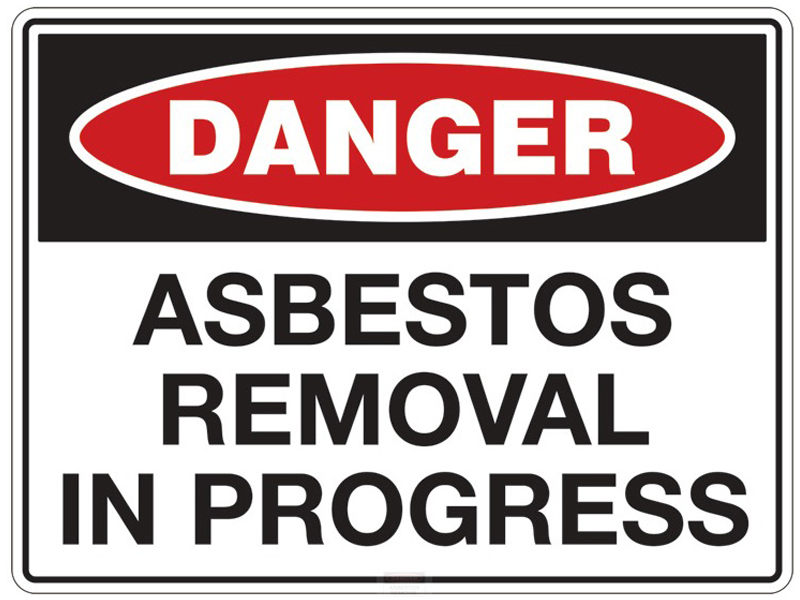Know the NO’s when it comes to Asbestos
Asbestos was a very popular building product widely used in Australia for decades. Asbestos fibers are much finer than human hair, they can float in the air not visible to the naked eye and can easily be inhaled.
For decades we were unaware of the dangers to our health that asbestos can cause. In the past 30 years or so there have been thousands of reported cases of asbestos related illnesses and deaths. Many of these victims were workers in the asbestos mining industry, building and construction and related trades, demolition, power stations, ship yards and boiler makers. Asbestos could be found in such a wide range of products including cement piping and sheeting, ceiling tiles, floor tiles, roofing materials, paint, electrical wire insulation even components in small appliances and brake linings for cars. Therefore it is no small wonder that many home handymen renovators fell victim to asbestos related disease.
Asbestos was commonly used in the construction of thousands of homes throughout Australia until the 1980’s. Since 2004 there has been a ban on the use of all materials containing asbestos. Therefore the use of asbestos now is illegal. However if your home was built before 1990 it is likely that it contains some form of asbestos and therefore presents a danger if it is damaged or if it is removed without the correct procedures in place. If you have asbestos cement linings in your home that are not damaged in any way and are painted don’t touch them if you don’t have to.
For decades we were unaware of the dangers to our health that asbestos can cause. In the past 30 years or so there have been thousands of reported cases of asbestos related illnesses and deaths. Many of these victims were workers in the asbestos mining industry, building and construction and related trades, demolition, power stations, ship yards and boiler makers. Asbestos could be found in such a wide range of products including cement piping and sheeting, ceiling tiles, floor tiles, roofing materials, paint, electrical wire insulation even components in small appliances and brake linings for cars. Therefore it is no small wonder that many home handymen renovators fell victim to asbestos related disease.
Asbestos was commonly used in the construction of thousands of homes throughout Australia until the 1980’s. Since 2004 there has been a ban on the use of all materials containing asbestos. Therefore the use of asbestos now is illegal. However if your home was built before 1990 it is likely that it contains some form of asbestos and therefore presents a danger if it is damaged or if it is removed without the correct procedures in place. If you have asbestos cement linings in your home that are not damaged in any way and are painted don’t touch them if you don’t have to.

For anyone who is considering any form of alterations, renovations or demolition on your home, garden shed, garage or out buildings built prior to 1990 we urge you to thoroughly research before you embark on any project. It is a very hazardous material and all necessary pre-cautions should be undertaken.
There is a myriad of information available on the internet from Safe Work Australia, State Governments and even professional licenced asbestos removalists with advice about how to recognise asbestos, how best to handle it and the removal and disposal of it. Legally, nonprofessionals are permitted to handle and remove a minimal amount of asbestos. If you are going to embark on such a project you must check with your local council or government regarding the amount a nonprofessional is permitted to handle and where is can be safely disposed of. It is illegal to dispose of asbestos anywhere other than licensed landfill sites.
It makes much more sense to use a professional fully licenced asbestos removalist who will help identify the material and work out the best course of action to remove and dispose of it. With the possible health risks posed to yourself, family and neighbours it will be money well spent.
Use the Homeimprovement2day directory to find companies that remove asbestos and other home improvement specialists near you.
There is a myriad of information available on the internet from Safe Work Australia, State Governments and even professional licenced asbestos removalists with advice about how to recognise asbestos, how best to handle it and the removal and disposal of it. Legally, nonprofessionals are permitted to handle and remove a minimal amount of asbestos. If you are going to embark on such a project you must check with your local council or government regarding the amount a nonprofessional is permitted to handle and where is can be safely disposed of. It is illegal to dispose of asbestos anywhere other than licensed landfill sites.
It makes much more sense to use a professional fully licenced asbestos removalist who will help identify the material and work out the best course of action to remove and dispose of it. With the possible health risks posed to yourself, family and neighbours it will be money well spent.
Use the Homeimprovement2day directory to find companies that remove asbestos and other home improvement specialists near you.